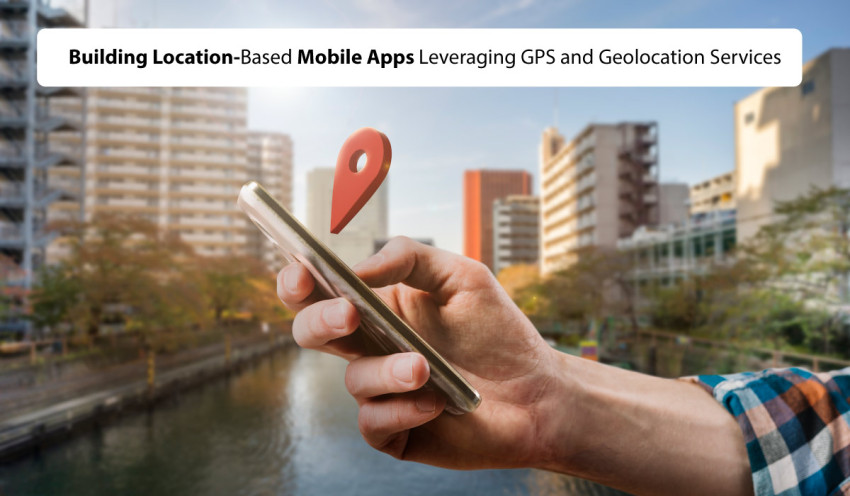
In the era of smartphones and mobile connectivity, location-based applications have transformed the way we interact with the world around us. These apps leverage the power of Global Positioning System (GPS) and geolocation services to provide users with tailored experiences based on their real-time locations. From navigation and social networking to retail and fitness, location-based mobile apps have become an integral part of our daily lives. In this blog, we'll delve into the technology behind these apps, explore their benefits, and discuss key considerations for building successful location-based mobile applications.
The Technology Behind Location-Based Apps
1. GPS Technology
GPS is a satellite-based navigation system that allows devices to determine their precise location on Earth. By receiving signals from multiple satellites, a GPS-enabled device can calculate its latitude, longitude, and altitude. This technology forms the foundation of location-based mobile apps, enabling accurate positioning and real-time tracking, suggest custom mobile app development companies in Bangalore.
2. Geolocation Services
Geolocation services combine GPS data with other sources of information, such as Wi-Fi networks and cell towers, to provide even more accurate and continuous location tracking, especially in urban areas where GPS signals might be obstructed.
Benefits of Location-Based Mobile Apps
1. Enhanced User Experience
Location-based apps offer personalized experiences by delivering content and services that are relevant to a user's current location. Whether it's finding nearby restaurants, events, or friends, these apps cater to individual preferences in real time.
2. Efficient Navigation
Navigation apps have revolutionized the way we travel. They provide turn-by-turn directions, real-time traffic updates, and alternative routes to help users reach their destinations faster and with less hassle.
3. Marketing Opportunities
Businesses can target their marketing efforts more effectively by delivering location-specific offers and promotions to users who are in close proximity to their stores. This level of personalized marketing can boost engagement and conversions.
4. Social Connectivity
Social networking apps utilize location data to facilitate interactions between users who are geographically close. This enables users to connect with friends, discover new connections, and even arrange meetups more easily.
5. Fitness and Wellness
Fitness apps use geolocation to track users' routes, distances, and performance during workouts. This data helps users monitor their progress and stay motivated to achieve their fitness goals.
Key Considerations for Building Location-Based Apps
1. Privacy and Data Security
Location data is sensitive information, and user privacy must be a top priority. Clearly communicate your app's data collection practices, allow users to control their location-sharing settings, and adhere to data protection regulations.
2. Battery Efficiency
Continuous use of GPS and location services can drain device batteries quickly. Optimize your app's power consumption by using low-power geolocation techniques and allowing users to adjust location settings.
3. User Permission
Ensure that your app requests user permission before accessing their location data. Explain why the app needs this information and how it will be used to provide a better experience.
4. Accurate Mapping
Accurate mapping is essential for navigation and location-based services. Partner with reliable mapping services or use APIs that provide up-to-date mapping data.
5. Real-Time Updates
For apps that require real-time updates, such as ride-sharing or delivery services, implement mechanisms that enable consistent and timely location tracking.
6. Customization and Personalization
Allow users to customize their location preferences within your app. Some users might want to receive notifications only when they're in specific areas or during certain times.
7. Scalability
Design your app to handle a large number of users and location requests simultaneously. Scalability ensures that your app maintains its performance as user numbers increase.
8. Testing and QA
Thoroughly test your app's location-based features across different devices, operating systems, and scenarios to identify and address any issues related to accuracy, responsiveness, and usability.
9. Offline Functionality
Consider implementing offline functionality, allowing users to access certain features or cached data even when they don't have an internet connection.
Real-World Examples
1. Google Maps
Google Maps is the quintessential navigation and mapping app. It provides detailed maps, directions, real-time traffic updates, and even indoor maps for large public spaces.
2. Uber
Uber's ride-sharing app relies heavily on real-time location data to match riders with drivers, track trips, and provide seamless navigation.
3. Pokémon GO
Pokémon GO is a popular augmented reality game that uses GPS to allow players to catch virtual creatures in real-world locations.
4. Yelp
Yelp uses geolocation to help users discover nearby businesses, read reviews, and find local events and deals.
Wrap-up
Location-based mobile apps have changed the way we navigate, connect, and experience the world around us. By harnessing GPS technology and geolocation services, developers can create powerful and engaging applications that offer personalized experiences, efficient navigation, and innovative solutions across various industries. When building location-based apps, prioritize user privacy, optimize for battery efficiency, and provide features that enhance the user's experience while respecting their preferences and needs.




